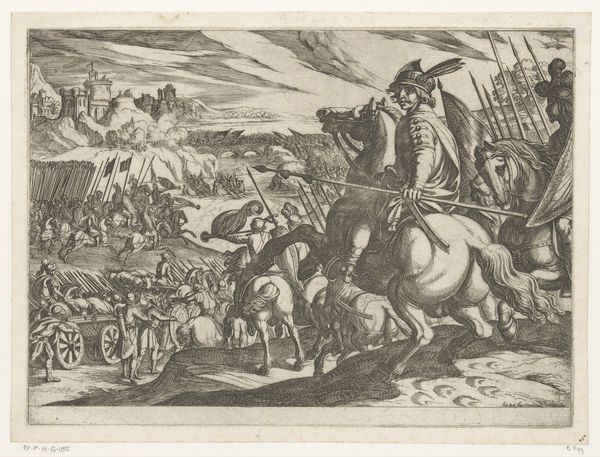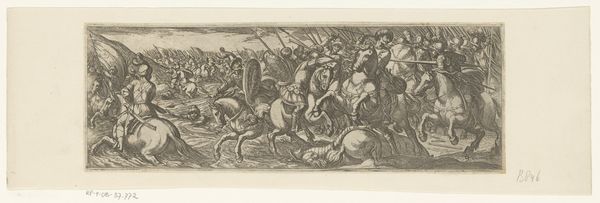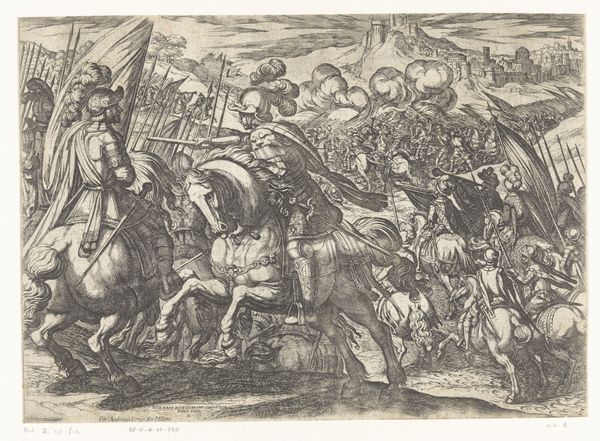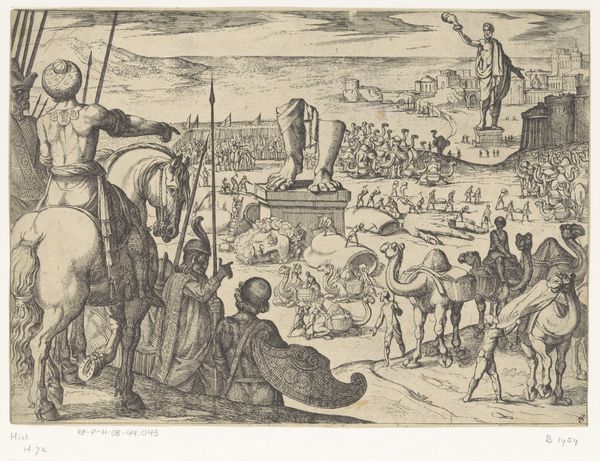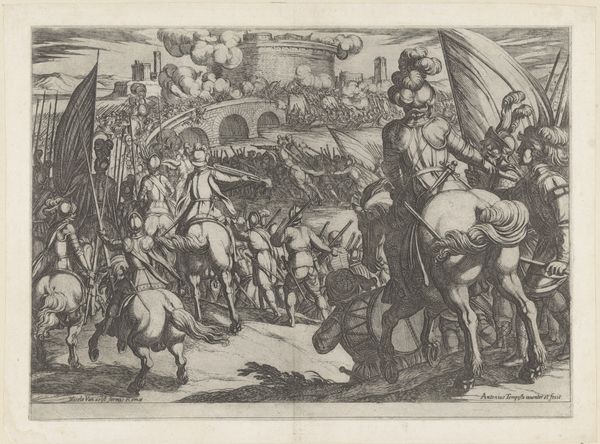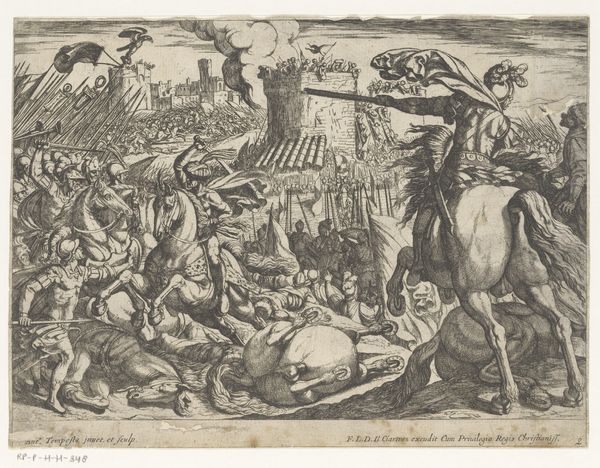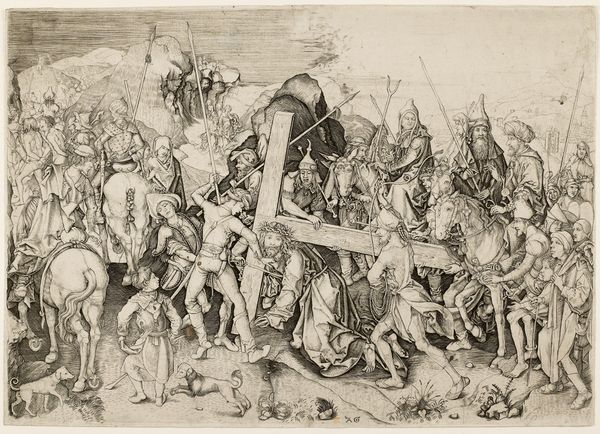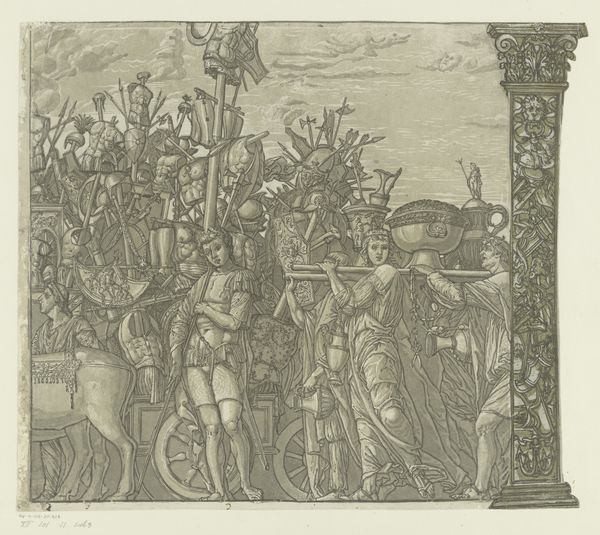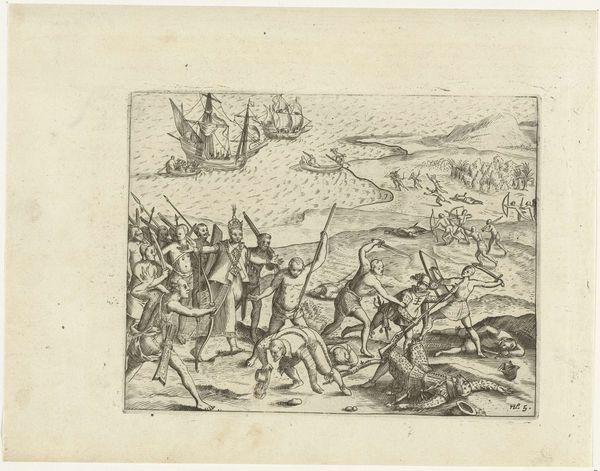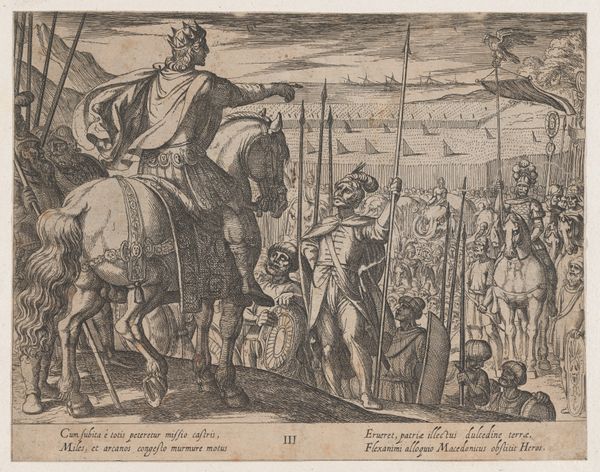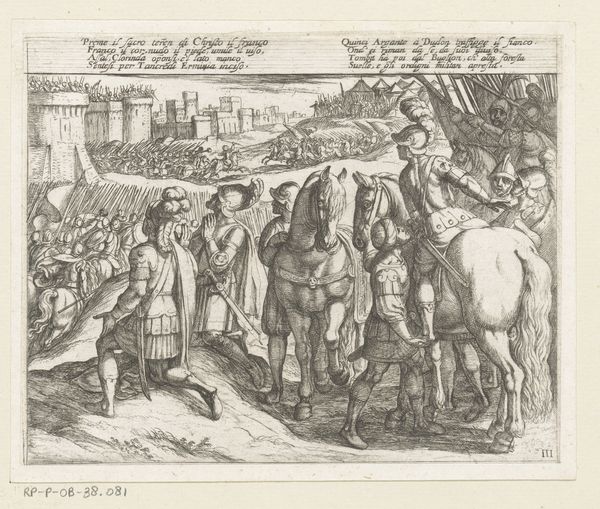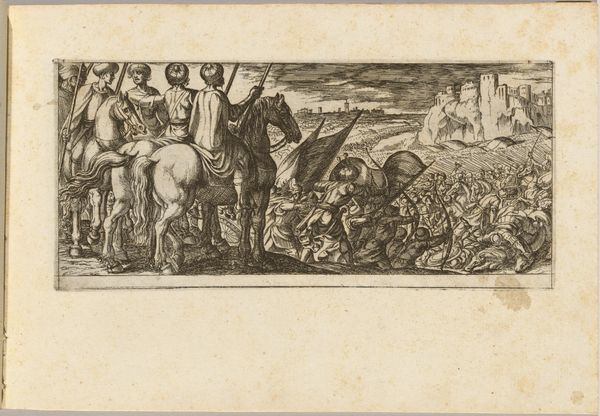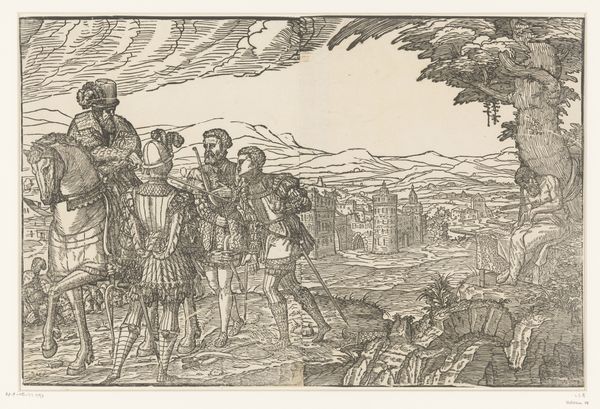
drawing, print, ink, engraving
#
drawing
#
pen drawing
# print
#
pen illustration
#
pen sketch
#
mannerism
#
ink line art
#
personal sketchbook
#
linework heavy
#
ink
#
pen-ink sketch
#
thin linework
#
pen work
#
sketchbook drawing
#
cityscape
#
genre-painting
#
history-painting
#
engraving
Dimensions: height 94 mm, width 272 mm
Copyright: Rijks Museum: Open Domain
Curator: This detailed print, titled "An Army Marching Outside a City," comes to us from Antonio Tempesta, dating back to 1599. Currently, it resides within the collection of the Rijksmuseum. Editor: My first thought is about the sheer density of figures. It’s a swarm of people, horses, spears, and banners—all heading towards a city in the background. The detail is quite amazing given it's a print. There is so much human energy visualized here. Curator: Tempesta, known for his prolific output of battle scenes and hunting scenes, delivers here a rather classic Mannerist composition. He often served as an important recorder of the military endeavors that defined much of the political landscape of his time. You know, warfare became so embedded in the early modern culture and, in this piece, you almost sense an idealized version of military might, don’t you? Editor: Yes, the "idealized" part is key. These kinds of images can normalize war and obscure the lived experiences of suffering and trauma it inevitably leaves behind. Consider the role images like these played in rallying support, especially amongst the ruling elite. Do we know the intended audience for these prints? Were they mass-produced or made for specific patrons? That would alter how one should approach its social meaning. Curator: Excellent point. While specifics of Tempesta's patronage aren't clear in this case, engravings and prints during this period definitely circulated amongst different classes. They weren’t exclusive to elite collections, making them powerful tools for disseminating political narratives and values. The level of activity in this battle scene is captivating though—a cacophony of bodies in controlled movements toward conquest. I appreciate the pen and ink technique, for example, lending itself to intricate, expressive lines defining each soldier and their weaponry. Editor: Indeed, technique and circulation are closely intertwined with ideology in this work. The scale of the crowd and fine details suggest ideas about empire, order, and masculine duty that demand further deconstruction from more varied and critical vantage points. If images create, solidify, and transform our ways of seeing, it makes examining war scenes like this all the more essential, in my view. Curator: Absolutely, I fully agree. A truly remarkable artwork offering multiple perspectives, from art's technical skill and historical importance to socio-political reflections on its effects and cultural context. Editor: Exactly, let's continue to interrogate such artwork, inviting a deeper engagement that challenges traditional viewpoints and assumptions about history.
Comments
No comments
Be the first to comment and join the conversation on the ultimate creative platform.
